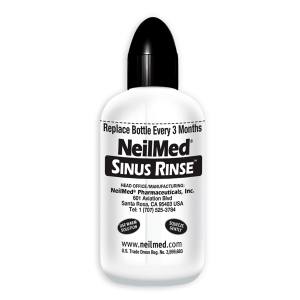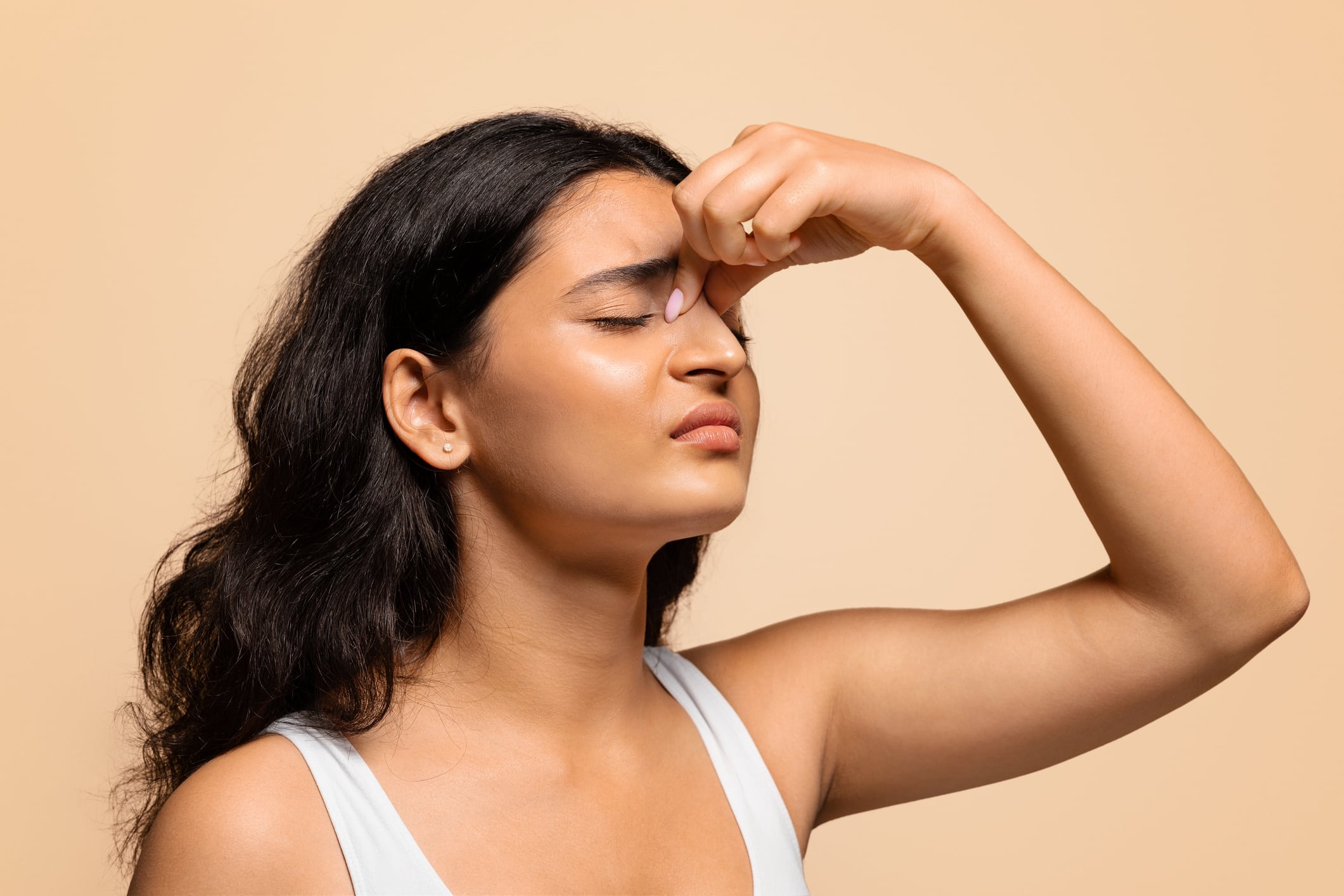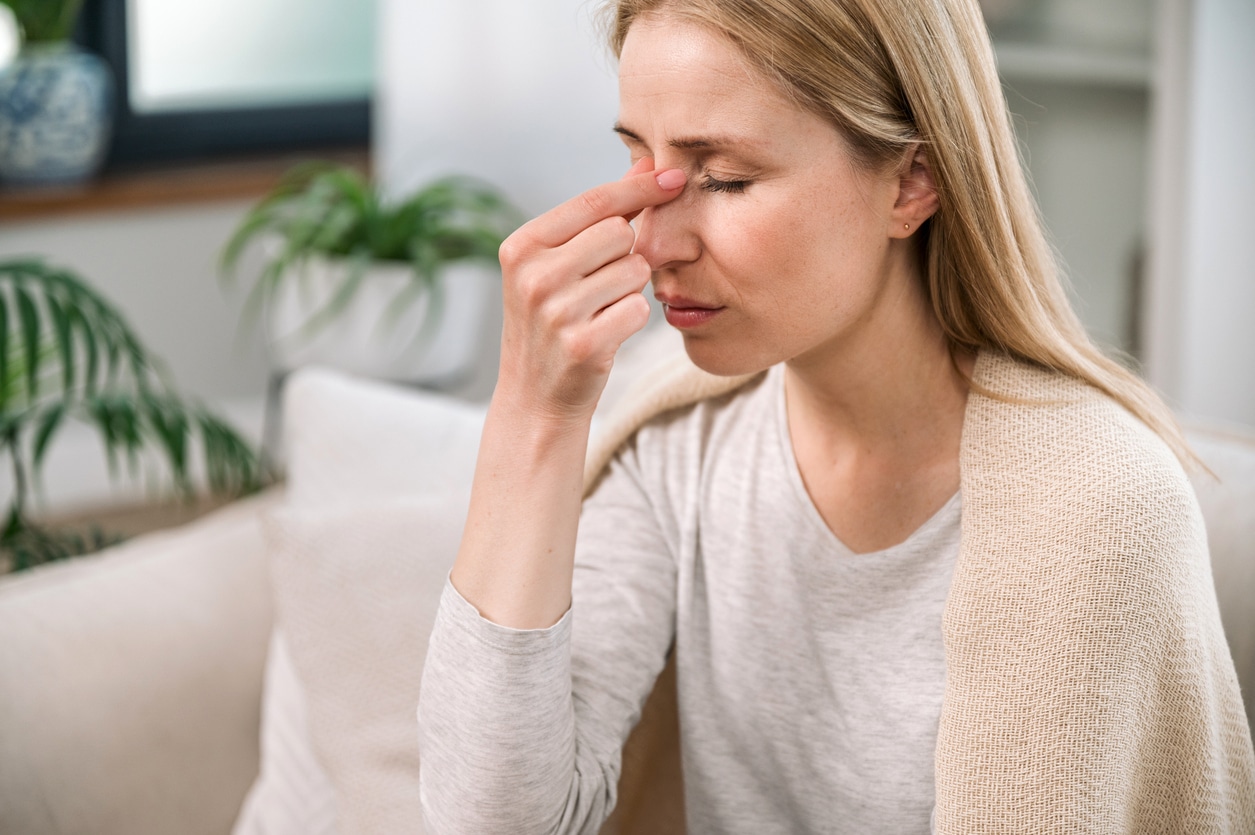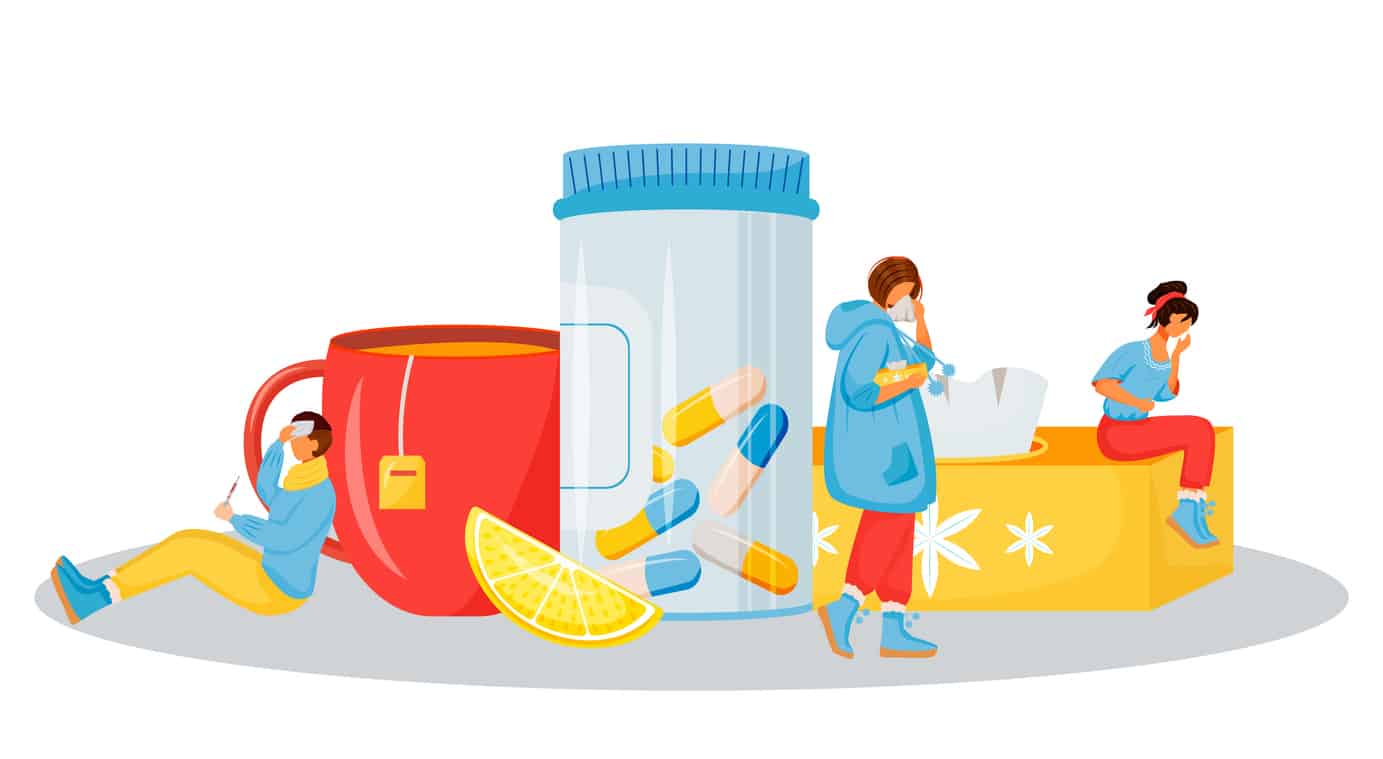The subtle shift in your breathing, the persistent feeling of fullness in your sinuses, the…

Nasal Rinsing: Does It Really Relieve Congestion?
Nasal Rinsing
Between dust, mold, grasses, and trees, it can feel like allergy season lasts all year round. Maybe you’ve heard of nasal rinsing, or nasal irrigation, and wondered if it actually works. Surely you can’t “rinse” allergens away, right?
The evidence is clear: nasal rinsing does help relieve sinus symptoms. If you’re interested in treating your nasal symptoms without medication, read on to learn how nasal rinsing works.
What is Nasal Rinsing?
Nasal rinsing is the process of flushing your sinuses with a saline (saltwater) rinse. It can be helpful for many different sinus symptoms, including dryness, runny nose, allergies, cold, and sinus infections.
One of your nose’s primary functions is to filter air before it enters your lungs. The mucus lining your sinuses is vital to the filtration process. However, dryness and inflammation make it hard for mucus to drain, which leads to congestion and pressure.
Did you know that there are hair-like cilia in your nose that trap bacteria and particles? The cilia “wave” and pass particles to your throat. When you swallow them, they get destroyed by the acid in your stomach. However, when your mucus is too thick, the cilia aren’t able to move well. When bacteria and particles get trapped in your sinuses, you feel congested.
Nasal irrigation thins mucus and cleanses your nasal passages so that your cilia can function correctly. The saline solution used in a rinse also helps restore moisture in dry sinuses. If you’re not sure whether nasal rinses are a suitable treatment for you, schedule an appointment with Dr. Davis to discuss your symptoms and options.
How Do You Perform a Nasal Rinse?
Doing a nasal rinse is quick and simple. First, you need to mix your solution. Our recommendation is to purchase pre-measured sinus rinse packets from NeilMed and mix one pouch with 8 ounces of lukewarm distilled water. Each packet contains a mixture of sodium chloride and sodium bicarbonate, which creates a saline (saltwater) solution when combined with distilled water. The pre-measured packets are convenient, pH balanced, and more sterile than mixing your own.
It’s very important that you use distilled or sterile in your nasal rinse. Tap water is not safe to use because it can contain bacteria and protozoa, including amoebas. When you drink tap water, your stomach acid kills any bacteria you ingest. However, your nose has no such mechanism, so organisms can survive inside your nasal passages and cause a serious, and potentially fatal, infection.
After you’ve mixed your solution, lean forward over a sink and tilt your head to one side. You want to encourage the saline rinse to flow in one nostril and out the other, so do not lean back or the rinse will go down your throat. It won’t hurt you if you swallow a little, it just won’t taste very good.
Breathe through your mouth as you pour the saline into your upper nostril. The water will flow through your sinuses and out your lower nostril. When you’ve used half of your solution, stop and blow your nose to clear the remaining water out. Then, tilt your head the other way and repeat the process through your other nostril.
When you’ve finished, thoroughly wash your nasal rinse device with warm water and dish soap. Lay it out in the open air with good ventilation so that it dries thoroughly. Discard any remaining saline. The NeilMed saline is medication-free and safe for most people to use. However, if the solution irritates your nose, dilute it with a little extra water or rinse less frequently.
You can rinse daily, up to twice if you need it. Many people find that they can eventually cut back to rinsing about three times per week to manage their sinus symptoms.
Nasal Rinsing Devices
You may be wondering how, exactly, you’re supposed to get the saline rinse into your nostrils. There are several different devices available for your use.
NeilMed
NeilMed offers several types of irrigation devices including squeeze bottles and a battery-operated cordless pulsating nasal washer. To use, simply follow the directions above. The NeilMed system is the superior rinse device for most patients because it’s easier to use and more affordable than others. You don’t have to lean your body in a precise way, simply leaning over a sink and tilting your head is sufficient to maximize the impact of the rinse.

Neti Pot
A neti pot looks like a small, ceramic teapot. You fill it with saline and put the “spout” at the opening of one nostril and follow the directions above, repeating for both nostrils. The neti pot has been used for centuries in Ayurvedic medicine but has recently caught on in the United States.
Naväge
The Naväge uses a small diaphragm pump to draw the saline solution up from a holding tank. It pumps the solution into one nostril and then “pulls” it out the other nostril into a second tank. Instead of irrigating over the sink as you do with a neti pot, the Naväge collects the used saline.
According to the manufacturer, there is no need to rinse both sides of the nose in a single session. However, Naväge advises users to rotate the nose piece and switch nostrils at least once a week.
Bulb Syringe
Bulb syringes work the same as the NeilMEd and neti pot. Parents can also use bulb syringes to help their children irrigate. Toddlers and babies may benefit from using a few drops of saline to help suck mucus out of the nostrils. Always check with your doctor before doing nasal irrigation with your children.
Prescription Nasal Rinse
If at-home rinses don’t have the effect you desire, speak to your physician about combining a saline rinse with prescriptions such as Budesonide (Pulmicort) or Mometasone. Budesonide and Mometason are corticosteroids primarily used for wheezing and shortness of breath in patients with asthma. They reduce irritation and swelling in the airways.
When mixed with saline solution, Budesonide and Mometasone have been successful in managing sinus symptoms in patients with chronic rhinosinusitis and recurring allergies. If you think you may be a candidate for Budesonide or Mometasone, schedule an appointment with Dr. Davis to discuss your treatment options.
Rinse Your Way to Better Breathing
You can use nasal rinses alone or in conjunction with other sinus treatments. If you’re suffering from persistent congestion or just battling a cold, give nasal rinsing a try. If you’d like to learn more about nasal irrigation or other treatment options visit ExcelENT of Alabama, and get in touch!


